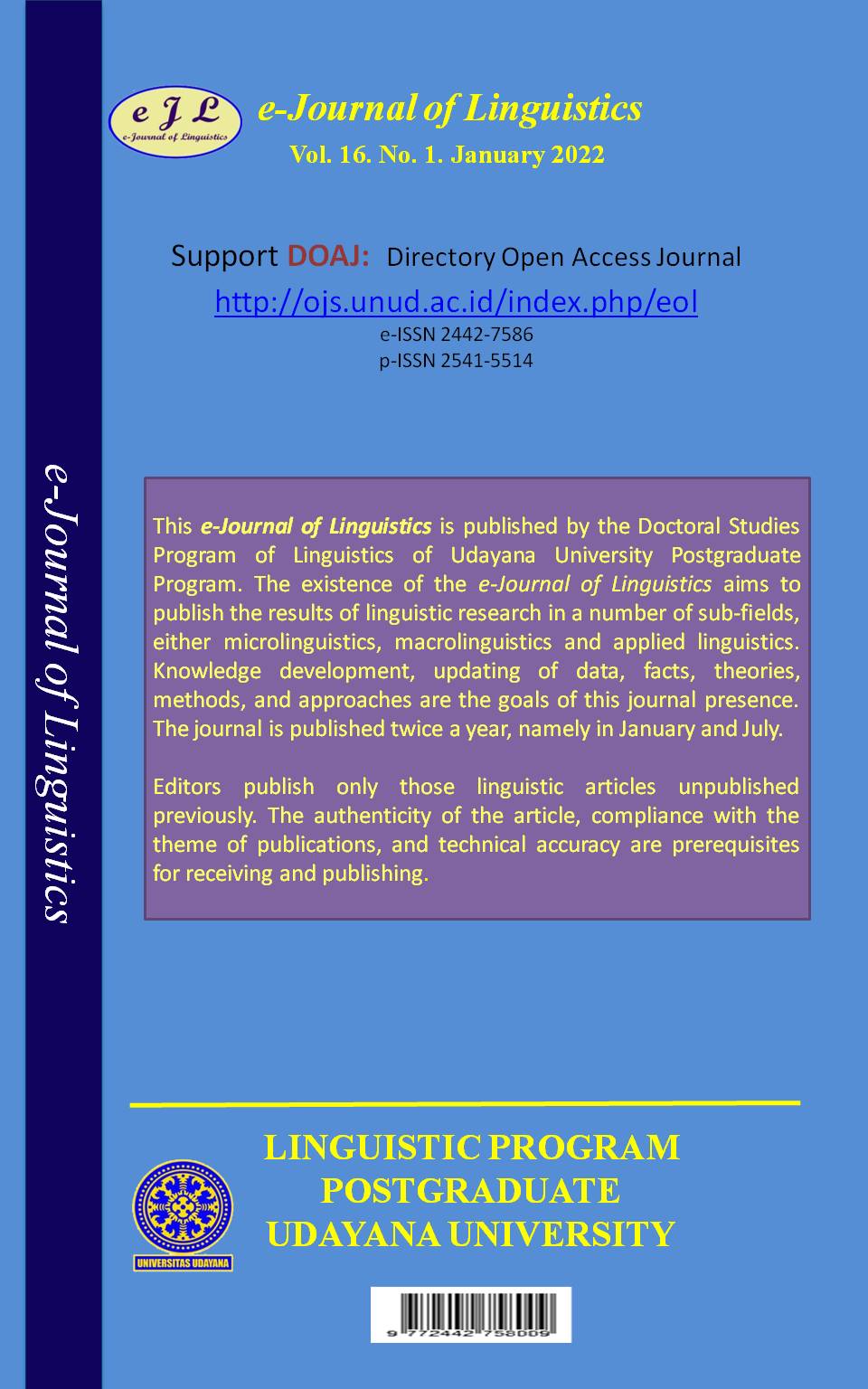The Cooperative Principle from Character Utterance in Paper Towns Movie (2015)
Abstract
The movie's utterances were studied in a practical study based on Grice's cooperative principles theory (1989). The researchers took the date source from Paper Town movies that directed by Jake Schreier. In collecting of data, the researchers used observational data and non-participant technique (Sugiyono, 2010). The methodology that used by the researchers in analyze this research is descriptive-qualities (Creswell, J. W., & Creswell, 2017). The researchers put a lot of information about the theory such as, definition, explanation and also example. The outputs of this research are 15 utterances that identified as cooperative principle and the 4 four maxims of cooperative branches: In (1) Maxim Quality, the researchers found 2 data. Next, in the (2) Maxim Quantity the researchers found 5 data. After that, in the (3) Maxim Relation the researchers found 6 data. And in the last (4) Maxim Manner, the researchers found 2 data.
Downloads
References
Brennan, S. E. (2005). How conversation is shaped by visual and spoken evidence. Approaches to studying world-situated language use: Bridging the language-as-product and language-as-action traditions.
Creswell, J. W., & Creswell, J. D. (2017). Research design: Qualitative, quantitative, and mixed methods approaches. Sage publications.
Fang, G., & Xin, L. (2017). An analysis of conversational implicature in nirvana in fire. 06(07).
Grice, P. (1989). Logic and Conversation. In his studies in the way of words. In Logic and Conversation.
Sari, Y. W., & Afriana, A. (2020). The cooperative principle analysis in about time movie. Linguistic, English Education and Art (LEEA) Journal, 4(1). https://doi.org/10.31539/leea.v4i1.1369
Sinaga, R., & Handayani, N. D. (2020). Flouting maxims in “White House Down” movie. JEE (Journal of English Education), 6(1).
Sugiyono, P. D. (2010). Metode penelitian kuantitatif dan kualitatif. Bandung: CV Alfabeta.
Yule, G. (1985). The study of language: an introduction.

This work is licensed under a Creative Commons Attribution 4.0 International License











